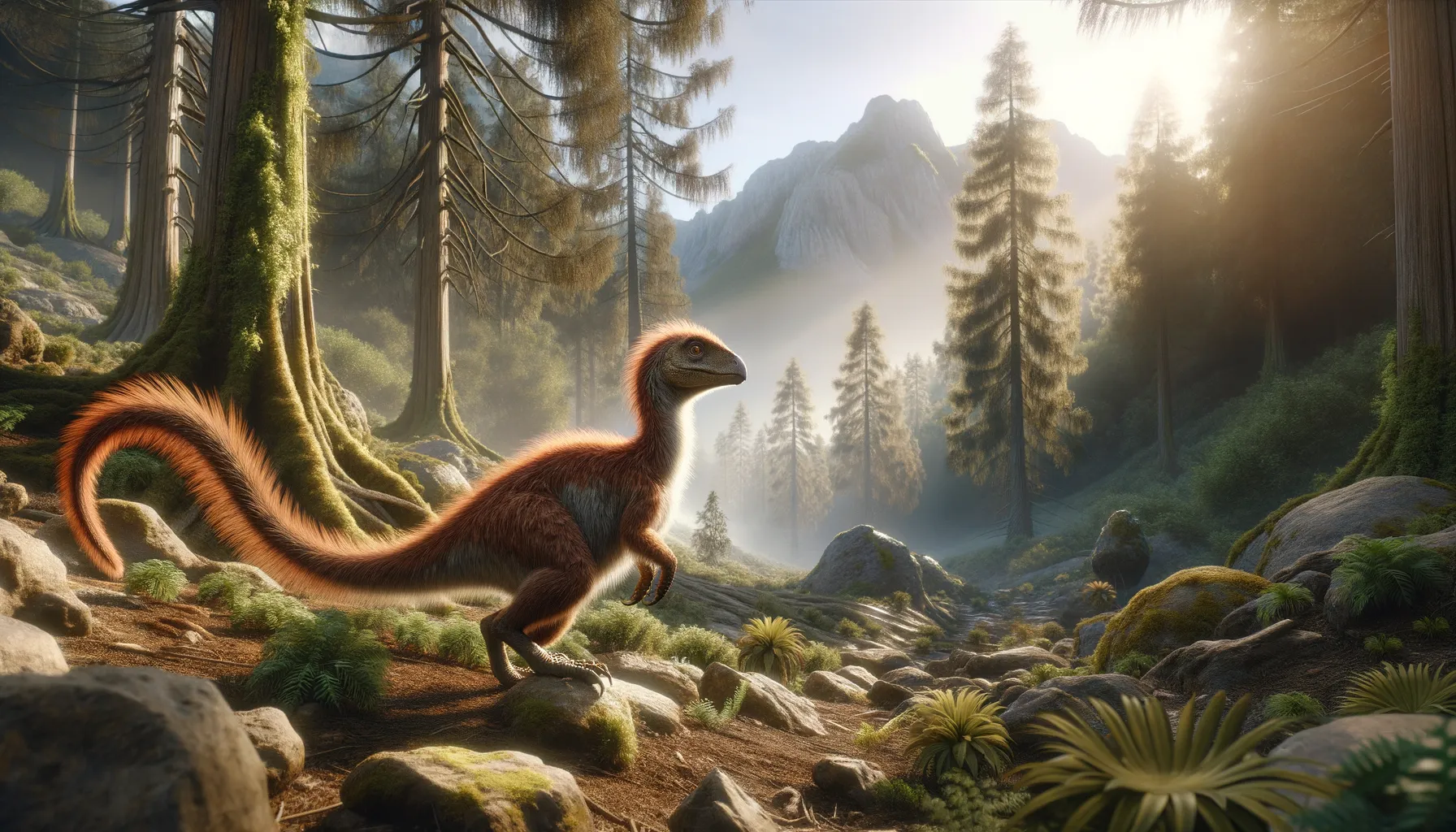
Sciurumimus
Feathered puzzles from the Jurassic past.
Period
Jurassic
Length
Roughly 1 meter in length.
Height
About 50 centimeters tall.
Weight
Approximately 1 kilogram.
Sciurumimus, a small theropod dinosaur, roamed what is now modern-day Germany during the Late Jurassic period. Famous for its long tail and potentially feathery covering, this dinosaur offers insights into the evolution of feathers and early theropod life. Its squirrel-like appearance adds intrigue to its study, capturing the fascination of both paleontologists and dinosaur enthusiasts alike. Discoveries related to Sciurumimus help bridge gaps in the understanding of predatory dinosaur development and their environmental adaptation.
Diet
Sciurumimus likely fed on small animals, including insects and other tiny creatures. Its diet included anything small enough for it to catch and eat, reflecting an opportunistic feeding style.
Hunting
Due to its small size and limited speed, Sciurumimus may have relied on stealth and ambush tactics for hunting. It could have used its feather-like structures to blend into its environment while stalking prey.
Environmental challenges
Surviving in a world dominated by larger predators, Sciurumimus had to navigate numerous dangers. Climate fluctuations and habitat changes would have posed challenges, affecting the availability of food and suitable living conditions. Additionally, competition from other small theropods would have required adaptability in both diet and territory. Fossil evidence suggests it may have lived in forested areas, contending with different terrain types and weather conditions.
Speed
Relatively slow-moving due to its small size.
Lifespan
Estimated to be around 10 to 20 years.
First discovery
Discovered in 2012 in Bavaria, Germany.
Fun Facts
- Sciurumimus is known for its bushy tail, which is quite unusual for a dinosaur and contributed to its name being inspired by 'Sciurus,' the Latin word for squirrel.
- This dinosaur lived during the Late Jurassic period, about 150 million years ago, in what is now Germany.
- Sciurumimus was a theropod, which means it belonged to the same group of dinosaurs as the mighty Tyrannosaurus rex, although it was much smaller.
- The first fossil of Sciurumimus was discovered in 2012, and it caused excitement because it was well-preserved, showing evidence of feathers.
- Unlike the big theropods we often think of, Sciurumimus was a small, carnivorous dinosaur, suggesting a different ecological role, possibly feeding on insects or small animals.
- Its fossil findings have provided important insights into the evolution of feathers in dinosaurs, supporting the idea that many theropods had feathers.
- Sciurumimus's discovery has helped scientists understand that baby dinosaurs could look quite different from adults, possibly indicating changes in appearance as they grew.
Growth and Development
Sciurumimus hatchlings would have been quite small, developing more feathers as they aged. Like many theropods, they likely grew rapidly in their early years to increase their chances of survival. As they matured, changes in bone structure suggest shifts in diet or prey capture techniques. Juveniles might have stayed near adults for protection until becoming more independent.
Habitat
The environment during Sciurumimus's time was lush with vegetation, offering plenty of cover and hunting grounds. Forested areas provided both shelter and varied food sources. Streams and rivers in its habitat could have attracted prey animals, creating natural hunting grounds. Seasonal changes might have influenced its behavior and movement patterns.
Interaction with other species
As a small predator, Sciurumimus interacted mostly with other small dinosaurs and insects. It would have needed to avoid larger predators, relying on agility and possibly group behavior for survival. Interactions with herbivores would mostly have been as a predator, but competition for space was likely common among similar-sized theropods.
Natural lifespan
In the wild, it might have lived up to 20 years, barring predation or severe environmental changes.
Reproduction
Like many theropods, Sciurumimus likely laid eggs, with parental care possibly involved to protect offspring. Nests would have been built in secluded areas to guard against predators. The incubation period could have varied, but parental roles might have been shared to ensure eggs hatched successfully.
Social behaviour
There is debate about Sciurumimus being solitary or living in small groups. Group behavior could have provided protection against predators and more effective hunting. Social interactions among juveniles might have influenced mating and territorial behavior as adults.
Fossil locations
Sciurumimus fossils have primarily been found in the Franconian Jura in Bavaria, Germany. Its skeletal remains were preserved well, providing vital information for study. The discovery site contributes to a wealth of Jurassic-era fossils, offering context about its ecosystem. These findings underscore the rich paleontological significance of the region.
